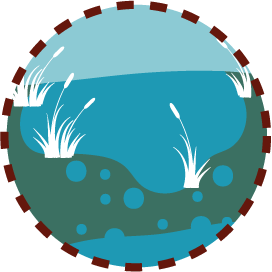Project Lead: Margaret Shanafield (Flinders University)
Project Team: Eddie Banks, David Bruce, Jackson Mahoney, Juan Lozano Acosta (Flinders University), NLPAC Rangers, and Ngarrindjeri community, Ngarrindjeri Aboriginal Corporation, Burrandies Aboriginal Corporation and First Nations of the South East, Murraylands and Riverland Landscape Board

Droughts and floods have significant impacts on freshwater ecosystems. In times of drought, groundwater provides a stable source of freshwater to the ecosystem. The Younghusband Peninsula (YHP) hosts a fresh groundwater lens with very low salinity and is the some of the freshest water in the CLLMM region. This high-quality resource supports diverse Australian biota. The water balance of the soaks is controlled by rainfall versus evapotranspiration and seepage into the Coorong. However, despite the critical importance of these soaks in supporting a healthy ecosystem, little is known about how they function hydrologically and what the major environmental drivers and climatic conditions are that threaten their existence.
This project focuses on First Nations knowledge generation and sharing and ecological research to better understand how ecological and culturally significant freshwater soaks will be impacted by future climate scenarios.
This project is compiling and analysing shallow-water level data from recently installed DEW pressure transducer dataloggers. It is also providing initial estimates of evapotranspiration and outflow to establish a water balance. Researchers are examining how this water balance may change under alternative rainfall and temperature conditions, and what that means for protecting significant cultural values. This project builds on an already established partnership with the Ngarrindjeri and First Nations of the South East to understand and protect important freshwater resources in the CLLMM region.
The Ngarrindjeri community has expressed its strong desire to spend more time on Country at the soaks to better understand them. In this project, they are partnering with researchers on fieldwork outings, thus facilitating First Nations and Western scientific water-knowledge exchange. During these trips, water level loggers have been downloaded, outflow from the soak gauged, shallow groundwater monitoring wells installed, geophysical surveys conducted to determine shifts in moisture content, and evaporation measured. Data will be collected over the full annual cycle of a wet and dry season to investigate seasonal changes to the soak. The field data is being combined with drone-based light detection and ranging (LiDAR) to map the catchment area of the YHP soak to accurately delineate its boundaries and enable a hydrologic model to be constructed. This model is being used to test scenarios that account for predicted climate change scenarios impacting both rainfall and evapotranspiration, with the goal of understanding water levels, salinity, and water availability into the future.
The project links community, managers, and policy makers within local and state governments. It will further strengthen connections between government and First Nations groups who have expressed a strong connection to the soaks.
The project will inform management by:
First Nations culture and traditions are rooted within an ancient historical connection with country and countless generations of studying their local environment as a way of life. First Nations traditional ways of life, including land and water management, sustainable harvesting, and the conservation of local species can provide vital perspectives into the ways we manage the lands and waters into the future.
Thie cultural significance of this project concerns the impact reduction on, and adaptation of the cultural practices, traditions and heritage sites associated with ocean beaches. The traditions and practices may include cockle (kuti) harvesting, or the protection of Nga:tar (totem species) such as varying waterbirds that nest or feed on the ocean beaches. First Nations people of the CLLMM region continue to undertake these traditional practices and obligations today.
Understanding the coming changes to ocean beaches will hold significance in preparing First Nations people, culture and businesses to such changes, providing opportunity for adaptations or mitigations to be implemented in the future.